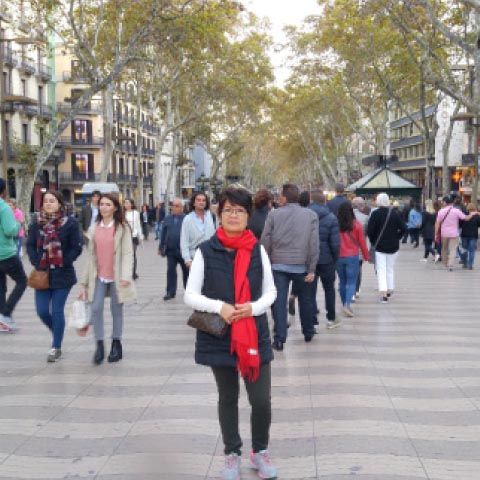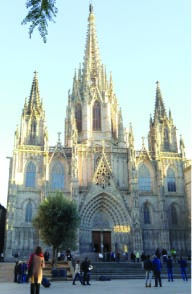
Think of places tourists most want to see and the Great Wall of China comes to mind, as do the Eiffel Tower and the Egyptian pyramids. But the one place that has them all beat is, surprisingly, a basilica in Barcelona – the Sagrada Familia.
This basilica is architect Antoni Gaudi’s piece de resistance and an international symbol of the city itself. It even has its own subway stop on the Barcelona Metro. The place is so popular among tourists that its 15 euros (P968) entrance fee racks up some serious cash. Some of that money must surely go into its building fund because the Sagrada Familia has been under construction since 1882 and still isn’t complete. Gaudi himself was not worried about the extended construction period; he was once quoted as saying, “My client [God] is in no hurry.”
The goal is to finish the building by 2026 on the centenary of Gaudi’s death. (He was hit by a streetcar on June 7, 1926, on his way to prayer and died three days later. He is buried in the Sagrada Familia’s crypt.)
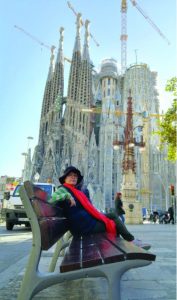
Gaudi was not the project’s original architect, and the initial design was a more traditional Gothic style, perhaps like the Barcelona Cathedral in the city’s Gothic Quarter. But when Gaudi took over the job, he changed everything into a style that has come to be labelled Catalan Modernism. To look at all the unusual shapes of the building’s exterior, from the conical towers to patterns inspired by nature, you would be tempted to say it was gaudy – but no, even though the word does not come from Gaudi’s name, the architecture can certainly draw some strong reactions. George Orwell, the famous author of 1984, was said to have remarked that the Sagrada Familia was “one of the most hideous buildings in the world,” while Spanish surrealist artist Salvador Dali referred it to as a “terrifying and edible beauty.”
Regardless of what you think of it, the place is a masterpiece by an architectural genius. The finished basilica will have 18 spires, all tied into its name, which translates to Holy Family. The highest of them all, the central spire, will symbolize Jesus Christ and rise to 560 feet.
The interior is just as impressive, and more colorful, with plenty of stained glass and soaring, tree-like columns. Even the non-religious can’t help but be moved by the majesty of the place. There is even a Filipino connection to the Sagrada Familia: Mounted on the back wall near one of the entrances is a giant clam shell from the Philippines. Apparently, Gaudi had intended for a number of these Philippine giant shells to be part of the basilica’s interior, where they will serve as vessels for Holy Water.
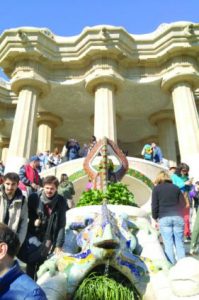
Filipinos have a small but thriving community in Barcelona, as do the Chinese, whose numbers now approach 19,000 and who have established themselves as restaurateurs, shopkeepers, entrepreneurs and landowners. Apparently, a number of Barcelona’s traditional tapas bars are owned by Chinese though the staff is largely European. Today the Chinese are considered Spain’s most active foreign investors.
China’s links to Spain go back nearly 400 years when the Spanish empire had a colony known as Spanish Formosa on the northern part of Taiwan, from 1626 to 1642. (Actually, the name “Formosa” comes from Portuguese word “beautiful” after sailors visited the island in 1544.)
The earliest known Chinese to arrive in Spain were probably slaves brought over via Spain’s colony in the Philippines in the late 16th century. But the real migration of Chinese to Spain didn’t begin until the 1920s. Many were originally peddlers going from town to town, but eventually they branched out into restaurants, textiles and trade, according to Wikipedia.
So Chinese visitors will find themselves exploring a foreign city but with subtle Asian overtones. Trip Advisor produces a list of Top 10 Chinese restaurants, and there’s even a Taoist Temple, which opened in Barcelona in 2014 at 530 Calle Corsega, not far from the Sagrada Familia.
Aside from that famous basilica there is another of Gaudi’s unfinished works called Park Guell, which is a short subway ride away on the Green line (Lesseps or Vallcarca stations). This was supposed to have been an exclusive residential subdivision on a height of land overlooking Barcelona’s downtown. In 1900, local industrialist Count Eusebi Guell wanted to build a garden city and commissioned Gaudi to design it. Unfortunately, by 1914, the project was abandoned. Only two houses were built, neither of them designed by Gaudi, but he did live in one of them, which is now a museum to his life and work.
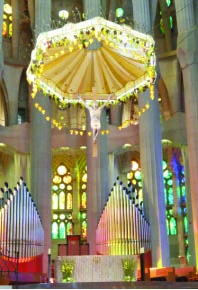
Two buildings near the park entrance have Gaudi’s signature style all over them and remind me of the houses in the Wizard of Oz’s Munchkin Land.
Park Guell – entrance 7 euros (P452) for adults – was our first stop before visiting the Sagrada Familia. We could have taken the Metro there but decided to walk (about a half hour from Park Guell, but at least it’s downhill). What better way to experience this city, which is a magnificent place to walk around. There are plenty of things to see and do, from museums, churches and an old bullfighting ring repurposed as an indoor shopping mall, to stores and the ubiquitous Starbucks – but why go there when there are so many local coffee shops serving excellent brews?
We stopped at a local bakery and picked up some flaky pastries and a chocolate croissant, which
I washed down with an Americano coffee bought at a nearby shop, which also served beer, wine and spirits. We relaxed at a sidewalk table while taking in the activity around us.
That’s one thing we noticed here. People seem less rushed, and if they want a beer, why not just buy one at the store and sit down to enjoy it? Or even take it with them? We saw a few people, beer in hand, walking down La Rambla, the major tree-lined pedestrian mall running between Placa de Catalunya and Port Vell. I had one myself sitting on a bench along the boulevard of Avinguda de Gaudi in the shadow of the Sagrada Familia.
But don’t do that too openly. It’s actually illegal to consume alcohol that way.
